Enjoy the stimulating and engaging work being done by these Yeshiva University faculty across the campuses
Dr. Cynthia Wachtell Daniel Pollack Dr. Ran Drori Dr. Jess Olson Dr. Joy Ladin Dr. Edward Belbruno Dr. Gabriel Cwilich Barbara Blatner Dr. Jeffrey Gurock Dr. S. Abraham RavidDr. Cynthia Wachtell
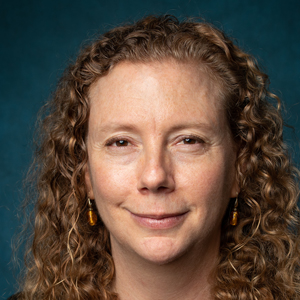 On Nov. 14, 2019, The New York Metro American Studies Association hosted a Salon Talk with Dr. Cynthia Wachtell, research associate professor of American studies and director of the S. Daniel Abraham Honors Program, on the subject of her book, The Backwash of War: An Extraordinary American Nurse in World War I (Johns Hopkins University Press). Salon Talks are an opportunity for local American Studies scholars to share their published work with an intimate audience.
From the program for the talk:
On Nov. 14, 2019, The New York Metro American Studies Association hosted a Salon Talk with Dr. Cynthia Wachtell, research associate professor of American studies and director of the S. Daniel Abraham Honors Program, on the subject of her book, The Backwash of War: An Extraordinary American Nurse in World War I (Johns Hopkins University Press). Salon Talks are an opportunity for local American Studies scholars to share their published work with an intimate audience.
From the program for the talk:
“In September 1916, as World War I advanced into a third deadly year, an American woman named Ellen N. La Motte published a collection of stories about her experience as a war nurse. Deemed damaging to morale, The Backwash of War was immediately banned in both England and France and later censored in wartime America. At once deeply unsettling and darkly humorous, this compelling book presents a unique view of the destruction wrought by war to the human body and spirit. Long neglected, it is an astounding book by an extraordinary woman and merits a place among major works of WWI literature.
“This volume, edited and with a detailed introduction by Dr. Cynthia Wachtell, gathers, for the first time, La Motte’s published writing about the First World War. In addition to Backwash, it includes three long-forgotten essays. Annotated for a modern audience, the book features both a comprehensive introduction to La Motte’s war-time writing in its historical and literary contexts and the first extended biography of the ‘lost’ author of this ‘lost classic.’ Not only did La Motte boldly breach decorum in writing The Backwash of War, but she also forcefully challenged societal norms in other equally remarkable ways, as a debutante turned Johns Hopkins–trained nurse, pathbreaking public health advocate and administrator, suffragette, journalist, writer, lesbian and self-proclaimed anarchist.”
Dr. Cynthia Wachtell, research associate professor of American studies and director of the S. Daniel Abraham Honors Program at Stern College for Women, penned a contribution to the North American Review’s project, “Every Atom: Reflections on Walt Whitman at 200,” in which the editor of the project, Brian Clements, poses the question that the contributors attempt to answer: “Two hundred years after Walt Whitman’s birth, how do we grapple with the complexities of his legacy?” Dr. Wachtell’s contribution focuses on Whitman’s use of “song” and “singing” in his poetry: “Singing is the most compelling metaphor of the final version of Leaves of Grass. It reflects Whitman’s optimistic faith in America’s democratic enterprise. Nowhere is this articulated more elegantly than in ‘I Hear America Singing,’ in which he hears ‘the varied carols” of the carpenter, boatman, shoemaker, mother, and others. Whitman imagines ‘America singing,’ a harmonious coming together of diverse voices.” Read the entire essay.
On Oct. 22, 2019, Dr. Cynthia Wachtell, research associate professor of American studies and director of the S. Daniel Abraham Honors Program at Stern College for Women, gave a livestreamed presentation at the National World War I Museum and Memorial in Kansas City, Missouri, titled “The Backwash of War: Ellen N. La Motte and her Explosive Lost Classic.” The talk was co-sponsored by the museum, the National Archives and the University of Missouri-Kansas City Women’s Center. ”Boldly capturing World War I’s devastation, writer and suffragist Ellen N. La Motte penned her controversial book, The Backwash of War, about her experiences as a nurse on the Western Front,” explained Dr. Wachtell. “Modeling a new and influential style of war writing, her biting prose was banned in England and France upon its publication in 1916 and later censored in the U.S. by the book’s publisher upon the postmaster’s urging.” More about Dr. Wachtell’s work on Ellen N. La Motte:
- The Backwash of War: A New Future for an Extraordinary Book: Read more»
- Dr. Wachtell Publishes on Ellen Newbold La Motte: Read more»
- Dr. Wachtell Garners Attention for Ellen N. La Motte: Read more»
- Dr. Wachtell Presents Paper About the Great War: Read more»
Daniel Pollack
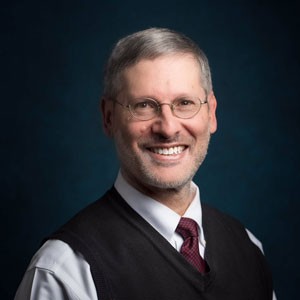 Daniel Pollack, professor at Wurzweiler School of Social Work, has published two articles.
“How To Select an Expert in a Custody Case” (with Toby Kleinman) for the New York Law Journal (also uploaded to YAIR): “The legal obligation of an expert witness is to provide independent advice to the court by presenting impartial, unbiased opinions about matters within their field of expertise. This duty is owed singularly to the court and supersedes any duty to the attorney or litigants. Your job, as the attorney, is to find the right expert for each case. One size does not fit all.”
“The Credibility of Child Protective Services Rests on the Integrity of the Department Director” in ASPAC Advisor (the publication of the American Professional Society on the Abuse of Children): “What the director does reflects the culture of the department. When winks and nods suggest more regard for the department’s image than the children it is supposed to protect, lawsuits can morph into scandal. And that’s when directors rightfully lose their jobs.”
Daniel Pollack, professor at Wurzweiler School of Social Work, has published two articles.
“How To Select an Expert in a Custody Case” (with Toby Kleinman) for the New York Law Journal (also uploaded to YAIR): “The legal obligation of an expert witness is to provide independent advice to the court by presenting impartial, unbiased opinions about matters within their field of expertise. This duty is owed singularly to the court and supersedes any duty to the attorney or litigants. Your job, as the attorney, is to find the right expert for each case. One size does not fit all.”
“The Credibility of Child Protective Services Rests on the Integrity of the Department Director” in ASPAC Advisor (the publication of the American Professional Society on the Abuse of Children): “What the director does reflects the culture of the department. When winks and nods suggest more regard for the department’s image than the children it is supposed to protect, lawsuits can morph into scandal. And that’s when directors rightfully lose their jobs.”
Daniel Pollack, professor at Wurzweiler School of Social Work, provides an answer to the following question in “Addressing a Perceived Conflict of Interest in Out-of-Home Care Licensing,” published in the October 2019 issue of Policy & Practice: “What if the investigation [by child protective services, or CPS] concerns a child in an out-of-home setting (foster home, group home, residential treatment center, day care center) licensed by the same department that houses CPS?” After explaining the concepts of “conflict of interest” and “an arm’s length transaction,” Pollack concludes that “putting in place measures to ensure there is no appearance of a conflict of interest would be a positive step in further enhancing the reputation of child protective services.”
Daniel Pollack, professor at Wurzweiler School of Social Work, has co-authored, with Toby Kleinman, “Challenges Attorneys Face When Family Courts Do Not Follow Rules of Evidence” in the New York Law Journal. Pollack notes that “courts are known for their many rules and regulations. While there are times a family court judge may properly make exceptions to the rules, too many exceptions, or exceptions contrary to accepted science, may reduce transparency and accountability, may undermine predictability, and may not be in the interest of justice.” He and Kleinman examine what attorneys who find themselves in this situation can do. Back to the top
Dr. Ran Drori
New Study Uncovers How Antifreeze Protein Mix Protects Fish from Freezing Next time you pass through the frozen food aisle at the supermarket, consider what it takes to put some of those items on ice. New scientific research reveals just how the natural defenses of some organisms work against extreme cold.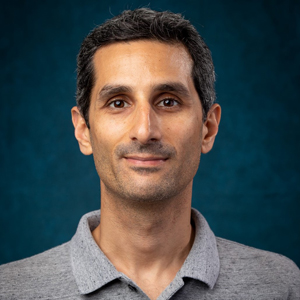 Researchers at Yeshiva University have illustrated the mechanism by which antifreeze proteins from fish and plants exhibit synergistic enhancement of their ability to prevent ice from growing further. The study was led by Dr. Ran Drori, an assistant professor at Yeshiva University, and his student Tehilla Berger ’19S (who was a 2018 Kressel Scholar). These researchers formed a collaboration with Dr. Konrad Meister from the Max Planck Institute in Mainz, Germany; Dr. Arthur DeVries of the School of Molecular & Cellular Biology from the University of Illinois at Urbana-Champaign; and with Dr. Robert Eves (Department of Biochemistry) and Dr. Peter Davies (Department of Biomedical and Molecular Sciences) from Queen’s University in Kingston, Ontario, Canada.
Their findings were recently published in the Journal of the American Chemical Society. The insights could open the door to a new approach of developing combinatory synthetic crystal growth inhibitors that would rely on synergy that could help advance the frozen food industry or lead to greater cold resistance for living plants, or advances in cryopreservation of tissues and organs.
Fish that live in cold waters have special proteins in their blood stream that prevent tiny ice crystal from growing. These special proteins are named antifreeze proteins. Some fish produce up to 12 different antifreeze proteins, which vary in their ice inhibition efficiency, although their structures are similar. Curiously, the most abundant antifreeze protein in the fish’s blood is a passive antifreeze protein, which cannot inhibit ice growth on its own. Mixtures of these proteins in the laboratory showed that when adding a small amount of an active protein to a passive protein, the mixture is capable of much higher inhibitory effect.
Researchers at Yeshiva University have illustrated the mechanism by which antifreeze proteins from fish and plants exhibit synergistic enhancement of their ability to prevent ice from growing further. The study was led by Dr. Ran Drori, an assistant professor at Yeshiva University, and his student Tehilla Berger ’19S (who was a 2018 Kressel Scholar). These researchers formed a collaboration with Dr. Konrad Meister from the Max Planck Institute in Mainz, Germany; Dr. Arthur DeVries of the School of Molecular & Cellular Biology from the University of Illinois at Urbana-Champaign; and with Dr. Robert Eves (Department of Biochemistry) and Dr. Peter Davies (Department of Biomedical and Molecular Sciences) from Queen’s University in Kingston, Ontario, Canada.
Their findings were recently published in the Journal of the American Chemical Society. The insights could open the door to a new approach of developing combinatory synthetic crystal growth inhibitors that would rely on synergy that could help advance the frozen food industry or lead to greater cold resistance for living plants, or advances in cryopreservation of tissues and organs.
Fish that live in cold waters have special proteins in their blood stream that prevent tiny ice crystal from growing. These special proteins are named antifreeze proteins. Some fish produce up to 12 different antifreeze proteins, which vary in their ice inhibition efficiency, although their structures are similar. Curiously, the most abundant antifreeze protein in the fish’s blood is a passive antifreeze protein, which cannot inhibit ice growth on its own. Mixtures of these proteins in the laboratory showed that when adding a small amount of an active protein to a passive protein, the mixture is capable of much higher inhibitory effect.
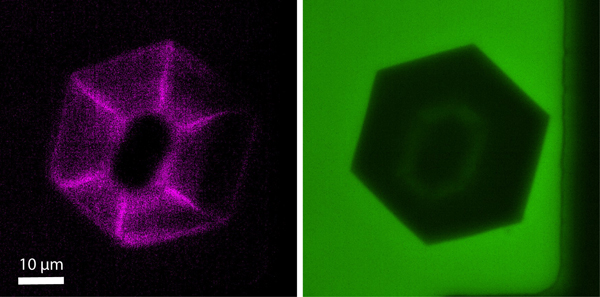 A mixture of two-colored antifreeze proteins binding to the same ice crystal at different locations on the crystal.
A mixture of two-colored antifreeze proteins binding to the same ice crystal at different locations on the crystal.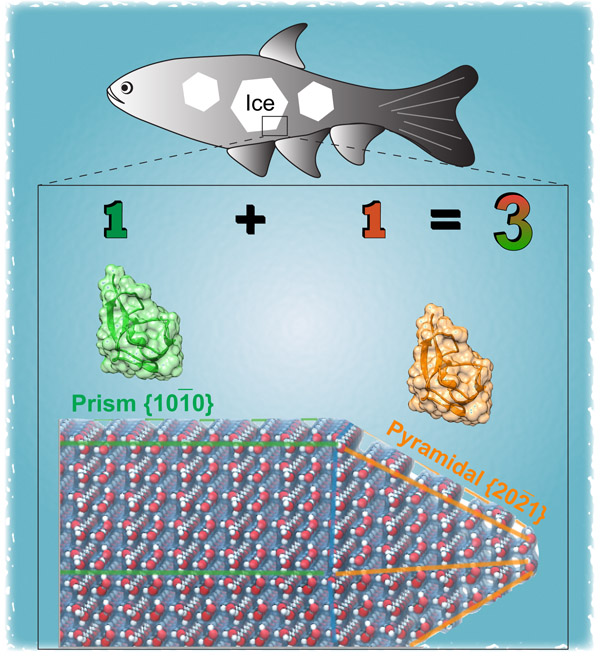 Back to the top
Back to the top
Dr. Jess Olson
A Quick Immersion Into Judaism Dr. Jess Olson, an associate professor of Jewish history at Yeshiva College, has published a book for Ediciones Tibidabo / Tibidabo Publications titled Jewish Culture: A Quick Immersion, one of a series of “quick immersions” that “uses accurate and straightforward language to offer a good introduction, or deeper knowledge, on diverse issues, as well-structured texts by prestigious authors delve into the worlds of political and social sciences, philosophy, science and the humanities.” It is on Amazon and Tibidabo in English and will then be translated into Spanish for the Spanish-speaking market since Tibidabo Publishers is an academic press in Spain. The press approached him after being referred by Dr. Steven Zipperstein, professor of Jewish Studies at Stanford University and Dr. Olson’s doctoral adviser. “It seemed like a terrific opportunity,” said Dr. Olson. “The book is a large-scale overview of Jewish history and culture, thinking about Jewish identity in three dimensions: religion, family/community, and nation. It is targeted towards a sophisticated lay audience, folks who are curious but know little about the topic.” The book has already garnered positive notices. Dr. Zipperstein, who had recommended Dr. Olson for the project, counts the book “among the most lucid, authoritative accounts of Jewish culture in the English language. A work of impressive breadth, great intelligence and clarity.” Dr. Michah Gottlieb, associate professor of Jewish thought and philosophy at New York University, declares Dr. Olson “has that written a clear, well-conceived, deeply informed, highly engaging introduction to Judaism,” while Dr. Steven Fine, Churgin Professor of Jewish History and director of the Center for Israel Studies at Yeshiva University, calls the book “a delightful entry point to all things Jewish.” Back to the topDr. Joy Ladin
On Being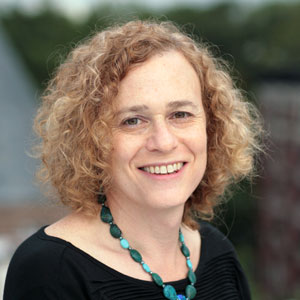 Dr. Joy Ladin, David and Ruth Gottesman Professor of English and director of the Beren Writing Center, has been pursuing, as usual, a busy schedule of writing, teaching and speaking.
Most notable, on Nov. 12, 2019, Dr. Ladin received the Hachamat Lev Award at the Keshet Outstanding! NYC 2019 ceremony at the Prince George Ballroom in New York City. The award is given to those who demonstrate an “enduring commitment to justice and full inclusion for gay, lesbian, bisexual, and transgender people in the Jewish community and beyond.”
On the teaching side, in October, she ran a workshop at Princeton University on writing and teshuva [atonement], and she was Selichot Scholar-in-Residence in September for three synagogues in the Fort Worth, Texas, area.
On Nov. 24, she will be teaching a course in the “Sundays at JASA” series titled “My Jewish Journey Between Genders: My Transgender Journey Among Jews,” and on Dec. 14, she will be doing a poetry reading and leading a discussion at SAJ titled “The Soul of the Stranger: Reading Torah from a Transgender Perspective.”
On the writing side, she has been selected as one of 19 women poets commissioned by Poets.org to write a poem for Project 19, a collaboration with the New York Philharmonic on a special program to commemorate the 100th anniversary of the passage of the 19th amendment in 2020.
The episode of “On Being” she recorded in 2013 is has been re-released and is available online.
Back to the top
Dr. Joy Ladin, David and Ruth Gottesman Professor of English and director of the Beren Writing Center, has been pursuing, as usual, a busy schedule of writing, teaching and speaking.
Most notable, on Nov. 12, 2019, Dr. Ladin received the Hachamat Lev Award at the Keshet Outstanding! NYC 2019 ceremony at the Prince George Ballroom in New York City. The award is given to those who demonstrate an “enduring commitment to justice and full inclusion for gay, lesbian, bisexual, and transgender people in the Jewish community and beyond.”
On the teaching side, in October, she ran a workshop at Princeton University on writing and teshuva [atonement], and she was Selichot Scholar-in-Residence in September for three synagogues in the Fort Worth, Texas, area.
On Nov. 24, she will be teaching a course in the “Sundays at JASA” series titled “My Jewish Journey Between Genders: My Transgender Journey Among Jews,” and on Dec. 14, she will be doing a poetry reading and leading a discussion at SAJ titled “The Soul of the Stranger: Reading Torah from a Transgender Perspective.”
On the writing side, she has been selected as one of 19 women poets commissioned by Poets.org to write a poem for Project 19, a collaboration with the New York Philharmonic on a special program to commemorate the 100th anniversary of the passage of the 19th amendment in 2020.
The episode of “On Being” she recorded in 2013 is has been re-released and is available online.
Back to the top
Dr. Edward Belbruno
Art, Science and Design Dr. Edward Belbruno, clinical professor of mathematics, gave an incisive interview to Antiques and The Arts Weekly, featured in their November 8, 2019, issue.Q: You were working at NASA’s JPL in Pasadena by day and making space-inspired paintings by night. What question were you trying to answer in your art?
A: A way to get to the moon with less fuel.
Read the full interview as well as these other articles about the famed professor: Painting His Way to the Moon and winning the Humboldt Prize, given to internationally renowned scientists and scholars.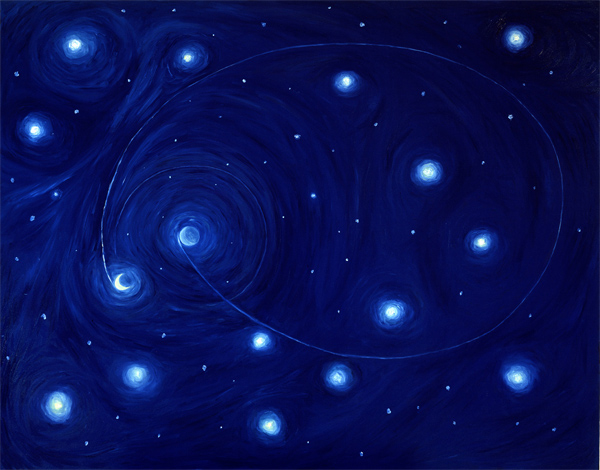 “Route to the Moon,” 1991, oil on canvas, 56 by 70 inches. This image is the route to the moon used by Japan.
“Route to the Moon,” 1991, oil on canvas, 56 by 70 inches. This image is the route to the moon used by Japan.Dr. Gabriel Cwilich
A Visit to Argentina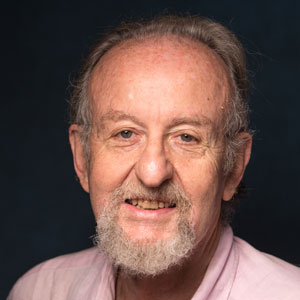 I visited several institutions in Argentina between April 26 and July 28, 2019. This is a brief summary of the activities and results of my visit.
San Luis: (April 26 to May 18)
I visited several institutions in Argentina between April 26 and July 28, 2019. This is a brief summary of the activities and results of my visit.
San Luis: (April 26 to May 18)
- I visited the Department of Physics of the Faculty of Mathematical and Natural Physical Sciences of the National University of San Luis and the Institute of Applied Physics (INFAP) of the Consejo Nacional de Investigaciones Científicas y Técnicas (CONICET).
- I taught two graduate courses as part of the PhD program of the Department of Physics. “Introduction to network theory” was for doctoral students from the provinces of San Luis, Córdoba and Mendoza as well as some researchers and post-docs from the Department of Physics. The more advanced course, on generating functions and advanced mathematical methods in networks, was intended for local students and researchers who attended the previous course. Both courses were approved by the University as admissible courses for the PhD program in Physics.
- I gave an informal talk about the mathematics of complex networks for the members of the group of statistical mechanics and surface chemistry modeling led by Dr. Antonio Ramirez Pastor, and I have continued my collaboration and previous discussions with that group on the subject of “jamming” and percolation in networks, and this has resulted in the first recent joint publication, which has recently been accepted by Physical Review E, a peer-reviewed, scientific journal, published monthly by the American Physical Society. “Random sequential adsorption on Euclidean, fractal and random lattices” was authored by P.M. Pasinetti, L.S. Ramirez, P.M. Centres, A.J. Ramirez-Pastor, and G.A. Cwilich.
- We also made advances in analytical work on exact results of “jamming” of k-mers in Bethe lattices. We have prepared a first draft, on which I will continue to work after leaving the group.
- I gave a general talk of dissemination for the entire University with a high attendance of professors and researchers from the area of science and artistic areas of the University on the topic “Science and contemporary theater: a symbiotic relationship?”, based on my work in New York on the subject of interactions between science and art. In this sense, I have also established a relationship with Dr. Silvana Spagnotto from the Department of Physics in a project she coordinates with more than one hundred plastic artists from San Luis who will prepare works on each of the elements of the Periodic Table in celebration of the sesquicentennial of the creation of the periodic table. I will participate in the curatorial work of this exhibit. I was also interviewed on the radio program "Locomotive" on FM 97.9, a radio station of the National University of San Luis.
- The base of my activities was the Department of Physics of the Faculty of Exact and Natural Sciences of the University of Buenos Aires, which is also headquarters of the Institute of Physics of Buenos Aires (IFIBA-CONICET). I met with visitors and participated in the regular life of the department (meetings, seminars and so on) during all that time.
- I had several informal discussions about my work and mathematical techniques Dr. Claudio Dorso and his students of his group, and we evaluated the possibility of continuing a collaboration since his group and mine have a common interest in epidemic processes and the use of network theory in the evaluation of the efficacy of vaccination strategies and the difficulties posed by the existence of recalcitrant anti-vaccinators in the expansion of an epidemic. In this context, I hope to invite Dr. Dorso to my department to present his work and explore possible future collaborations.
- I attended all the activities of the StatPhys 27 — International Conference on Statistical Physics held from July 8 to 12, 2019. I presented my work in one of the sessions and collaborated informally in some aspects of the organization of the conference.
- Also during my visit, I had discussions with Dr. Federico Vazquez of the Institute of Calculus (also of the Facultad de Ciencias Exactas y Naturales - Universidad de Buenos Aires) about our common interests in consensus-building models and the Axelrod model, on which we both worked.
- I also attended activities at the Cultural Center of Science (C3) at the Technological Scientific Pole, and in particular I held meetings with its director, Dr. Guadalupe Diaz Costanzo, and some members of her team to explore the possibility of activities of interest to both, particularly in the area of theater and science. A more specific public presentation aimed at people from the scientific and artistic communities that we were going to make in August had to be postponed due to difficulties in the agenda, but we hope to be able to schedule it in an upcoming visit.
- I visited the Department of Physics of the Faculty of Mathematics and Physics (FAMAF) of the National University of Córdoba, and the Enrique Gaviola Institute of Physics (IFEG-CONICET) that operates in that faculty.
- In particular, I had extensive discussion with the members of the Networks group, including Drs. Orlando Billoni and Juan Perotti, and their postdocs and students. His group and mine share an interest in network decimation processes, and strategies to defend them, and we have been able to establish areas of common interest for possible visits. In this context, we are trying to arrange for Dr. Andres Chacoma, one of the members of that group, to come to YU for several months under the auspices of a Fulbright scholarship. The corresponding invitation has already been issued by Yeshiva University.
- During my visit I presented a talk for the entire Faculty, sponsored by the Department of Physics, about “Complexity and vulnerability in networks.”
Barbara Blatner
Directing Her Own Plays Barbara Blatner, lecturer in English at Yeshiva College, directed two of her plays this past summer: Light at the Philipstown Depot Theatre’s Glass Ceiling Breaker festival and Advances in Communication at the Secret Theatre One-Act Play Festival in Long Island City. “I had directed several readings years ago but had never mounted a full (albeit short) production with staging, costumes, lighting and sound,” she recalled. “I have no training in directing, and so I had many questions about the process: How would I figure out blocking? How would I communicate with the lighting designer? Would I lose sight of the whole?” But she found that once the plays were cast and rehearsals started, “ideas and solutions for staging, images, text interpretation and sound came thick and fast. At every step of the way, I was helped by perceptive, skilled actors to find what worked best.” Directing taught her a great deal about how to pay attention to everything that an audience will see and hear on both visible and symbolic levels, valuable information for a playwright. “As in every art, the details of a production are what make it live or die. A script orchestrated and played on stage is magic, life conjured by words, actions and objects (props, costumes, set design, set pieces/furniture). I also gained a deeper appreciation of what it is to ‘act.’ Acting is creating genuine emotion in imaginary circumstances; actors use their history, emotional experiences, knowledge of the character and their bodies to show us real, true feeling. Actors expose themselves in this way and must be backed by their director to feel safe and confident in rehearsal and onstage. The safer I could help my actors feel, the more risks they were able to take to deepen their portrayals.” Like life, however, theatre must sometimes adjust its magic to what is practical. At the Depot Theatre in the old train depot at Garrision, New York, Metro North trains regularly loudly clacked by robustly blowing horns; actors had to know to speak louder at those moments or find a meaningful pause. At the end of Light, a menorah is lit. Blatner first wanted real candles on her grandmother’s beautifully tarnished bronze menorah until she learned that the theatre did not permit fire onstage. “Eventually, one of the actors found online a plastic menorah with bulbs that could be easily turned on. It wasn’t ideal, but the lights cast a lovely glow before the play ended, and it was gratifying to work together to find a solution to a logistical problem of imagined life.” All her work and the work of her actors and crew paid off: Advances in Communication was chosen for the finals round of the Secret Theatre festival, and she was named second in the Best Director category. Back to the topDr. Jeffrey Gurock
An Almost-Eden in the Bronx In 1940, the Metropolitan Life Insurance Company opened a planned community in the East Bronx, New York. Parkchester was celebrated as a “city within a city,” offering many of the attractions and comforts of suburbia, but without the transportation issues that plagued commuters into New York City. In this bucolic environment within Gotham, the Irish and Italian Catholics, white Protestants and Jews lived together rather harmoniously. In Parkchester, Dr. Jeffrey S. Gurock explains how and why a “get along” spirit prevailed in Parkchester and marked a turning point in ethnic relations in the city. He also documents how Parkchester was originally off-limits to African Americans and Latinos and explains why their eventual integration was made without violence as in other parts of the city. He will talk more about what he discovered on Nov. 20, 2019, at a lecture sponsored by the Bernard Revel Graduate School of Jewish Studies at the Israel Henry Beren campus. RSVP to reserve a place. Dr. Jeffrey S. Gurock is Libby M. Klaperman Professor of Jewish History at Yeshiva University. His books include The Jews of Harlem: The Rise, Decline, and Revival of a Jewish Community and the award-winning Jews in Gotham: New York Jews in a Changing City, 1920–2010.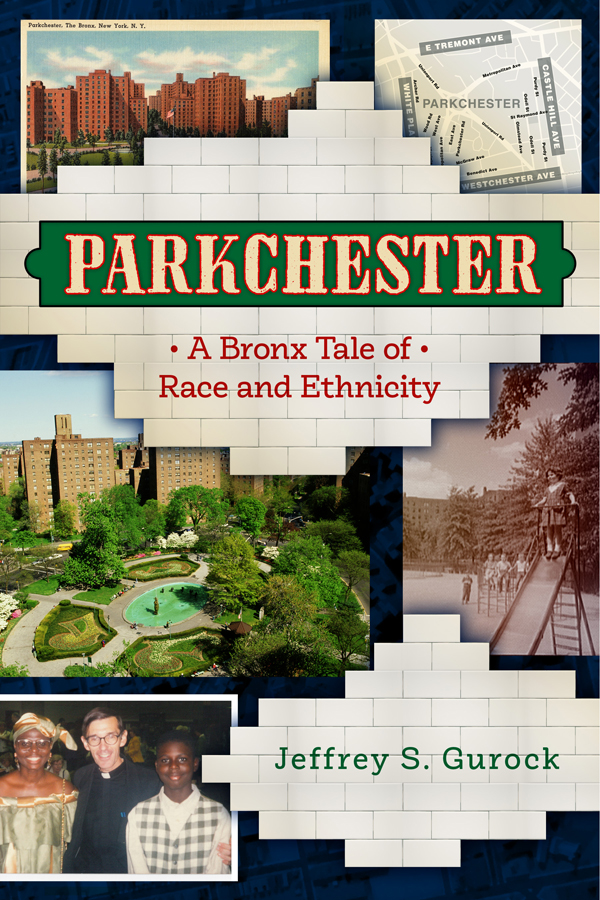 Back to the top
Back to the top
Dr. S. Abraham Ravid
Chairman of the Board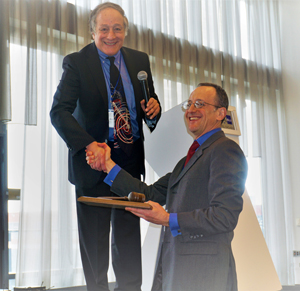 Avri Ravid (left), newly elected president of the MFA, hands a plaque to outgoing President, Jon Garfinkel from the University of Iowa
Avri Ravid (left), newly elected president of the MFA, hands a plaque to outgoing President, Jon Garfinkel from the University of Iowa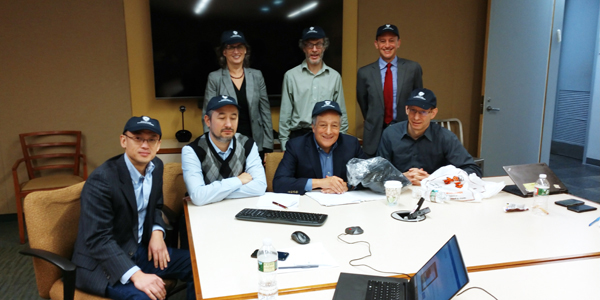 Seated (l-r): Dr. Hengjie Ai, University of Minnesota, program chair MFA 2020; Dr. Vahap Usysal, treasurer, DePaul University; Dr. S. Abraham Ravid, president, Sy Syms; Dr. Richards Rosen, VP, Federal Reserve Bank of Chicago. Standing (l-r): Dr. Wendy Pirie, CFA Institute, institutional director; Dr. Matt Pritsker, Federal Reserve Bank of Boston; Dr. Jon Garfinkel, University of Iowa, former president of the MFA (Not shown: on the phone, directors from Australia, the University of California and Dartmouth). Note that all are wearing caps with the Sy Syms logo.
Seated (l-r): Dr. Hengjie Ai, University of Minnesota, program chair MFA 2020; Dr. Vahap Usysal, treasurer, DePaul University; Dr. S. Abraham Ravid, president, Sy Syms; Dr. Richards Rosen, VP, Federal Reserve Bank of Chicago. Standing (l-r): Dr. Wendy Pirie, CFA Institute, institutional director; Dr. Matt Pritsker, Federal Reserve Bank of Boston; Dr. Jon Garfinkel, University of Iowa, former president of the MFA (Not shown: on the phone, directors from Australia, the University of California and Dartmouth). Note that all are wearing caps with the Sy Syms logo.